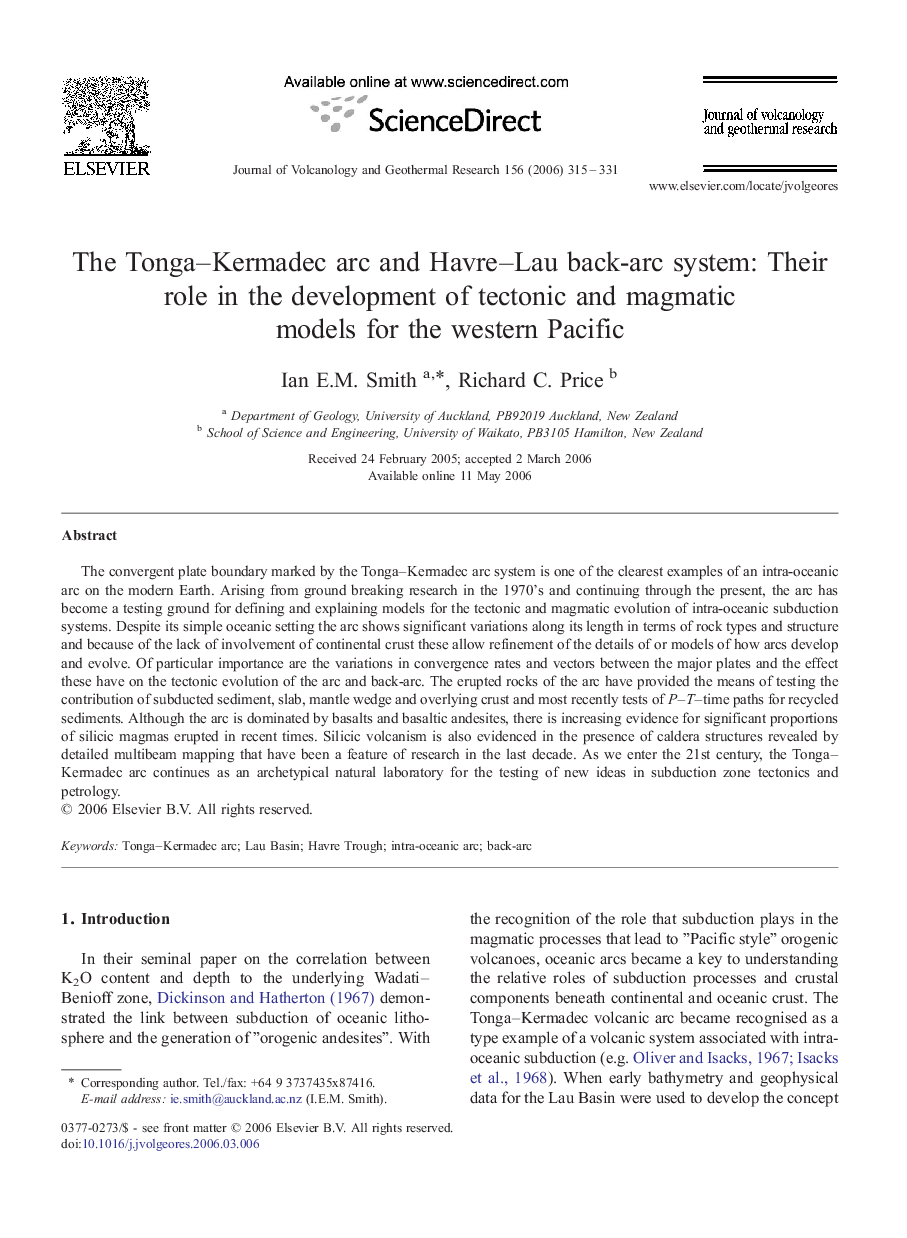| Article ID | Journal | Published Year | Pages | File Type |
|---|---|---|---|---|
| 4715044 | Journal of Volcanology and Geothermal Research | 2006 | 17 Pages |
The convergent plate boundary marked by the Tonga–Kermadec arc system is one of the clearest examples of an intra-oceanic arc on the modern Earth. Arising from ground breaking research in the 1970's and continuing through the present, the arc has become a testing ground for defining and explaining models for the tectonic and magmatic evolution of intra-oceanic subduction systems. Despite its simple oceanic setting the arc shows significant variations along its length in terms of rock types and structure and because of the lack of involvement of continental crust these allow refinement of the details of or models of how arcs develop and evolve. Of particular importance are the variations in convergence rates and vectors between the major plates and the effect these have on the tectonic evolution of the arc and back-arc. The erupted rocks of the arc have provided the means of testing the contribution of subducted sediment, slab, mantle wedge and overlying crust and most recently tests of P–T–time paths for recycled sediments. Although the arc is dominated by basalts and basaltic andesites, there is increasing evidence for significant proportions of silicic magmas erupted in recent times. Silicic volcanism is also evidenced in the presence of caldera structures revealed by detailed multibeam mapping that have been a feature of research in the last decade. As we enter the 21st century, the Tonga–Kermadec arc continues as an archetypical natural laboratory for the testing of new ideas in subduction zone tectonics and petrology.
